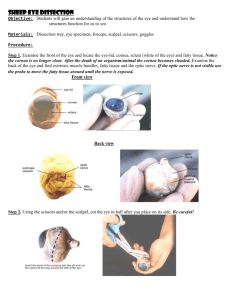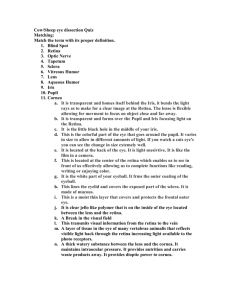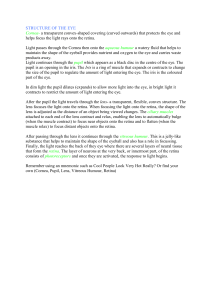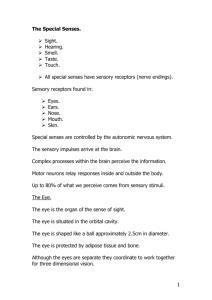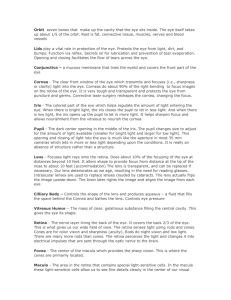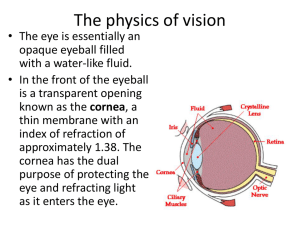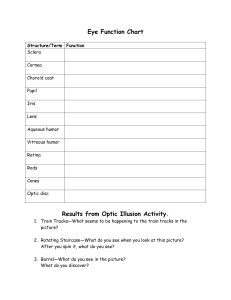Eye - WordPress.com
advertisement
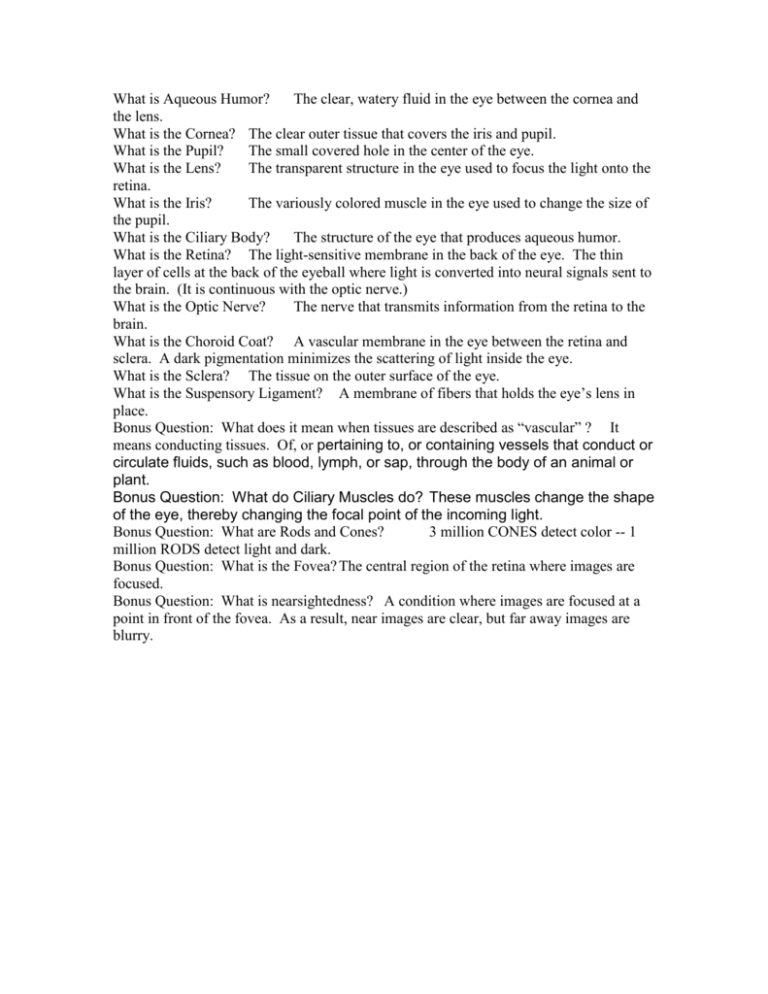
What is Aqueous Humor? The clear, watery fluid in the eye between the cornea and the lens. What is the Cornea? The clear outer tissue that covers the iris and pupil. What is the Pupil? The small covered hole in the center of the eye. What is the Lens? The transparent structure in the eye used to focus the light onto the retina. What is the Iris? The variously colored muscle in the eye used to change the size of the pupil. What is the Ciliary Body? The structure of the eye that produces aqueous humor. What is the Retina? The light-sensitive membrane in the back of the eye. The thin layer of cells at the back of the eyeball where light is converted into neural signals sent to the brain. (It is continuous with the optic nerve.) What is the Optic Nerve? The nerve that transmits information from the retina to the brain. What is the Choroid Coat? A vascular membrane in the eye between the retina and sclera. A dark pigmentation minimizes the scattering of light inside the eye. What is the Sclera? The tissue on the outer surface of the eye. What is the Suspensory Ligament? A membrane of fibers that holds the eye’s lens in place. Bonus Question: What does it mean when tissues are described as “vascular” ? It means conducting tissues. Of, or pertaining to, or containing vessels that conduct or circulate fluids, such as blood, lymph, or sap, through the body of an animal or plant. Bonus Question: What do Ciliary Muscles do? These muscles change the shape of the eye, thereby changing the focal point of the incoming light. Bonus Question: What are Rods and Cones? 3 million CONES detect color -- 1 million RODS detect light and dark. Bonus Question: What is the Fovea? The central region of the retina where images are focused. Bonus Question: What is nearsightedness? A condition where images are focused at a point in front of the fovea. As a result, near images are clear, but far away images are blurry.

